SUMMARY
This is AI generated summarization, which may have errors. For context, always refer to the full article.
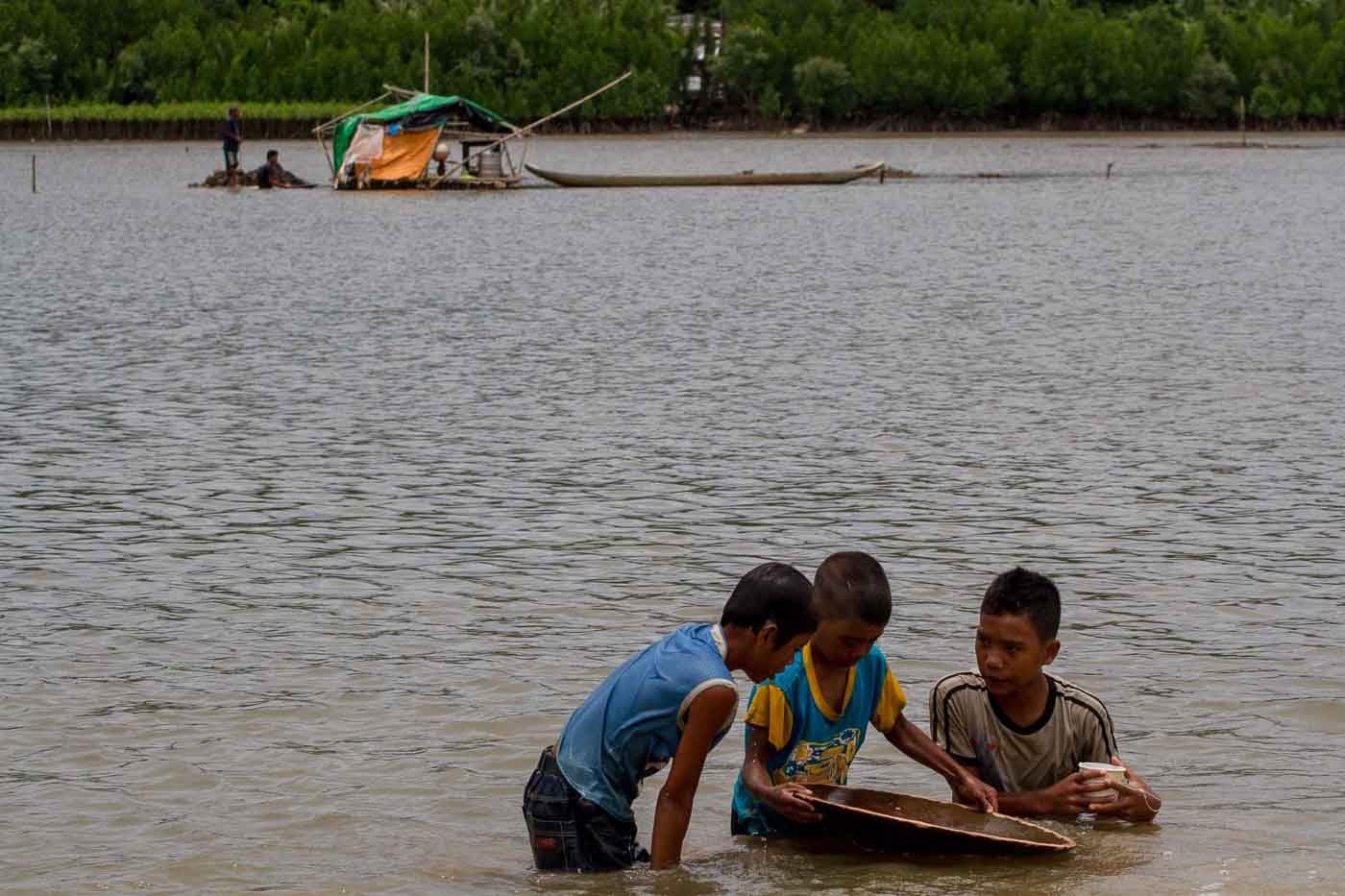
CAMARINES NORTE, Philippines — He started working in a mining site when he was 5 years old.
Now every day, Alex (not his real name) has to ride a boat to reach the center of a small river, the site of an underwater mining pit that has become his playground for years.
The 11-year-old boy works from 8 in the morning to 4 in the afternoon with his mother. Wearing just his old boxer shorts, he braves the waters of Barangay Sta Milagrosa in Jose Panganiban, Camarines Norte, hoping he will have a good find. According to him, mining gold has been his life for almost every day for the past 6 years.
“Hindi ko na po muna iniisip yung eskwela, hindi pa po namin kaya. Pero taun-taon po ay nag-e-enroll ako para kung sakali na lang na maka-jackpot sa pagkakabud ay puwede akong pumasok agad,” Alex said.
(I am not thinking of school for now, because we can’t afford it. But I enroll every year in case I get a big one from mining, so I can go to school any time.)
Alex earns an average of P80 to P100 (US$1.71 to 2.14) every day from gold panning. He also receives tips from regular crew members of the mining pit whenever he helps carry sacks of ores to the boat. “Pinagkakasya ko na lang po. Minsan ibinibigay ko lahat kay nanay para pambili ng bigas at ulam. Minsan nagtatago ako ng P20 para makaipon akong pambili ng damit,” Alex said.
(I am trying to make both ends meet. Sometimes I give all to my mother for food. Sometimes I save at least P20 from it to save money to buy my own clothes.)
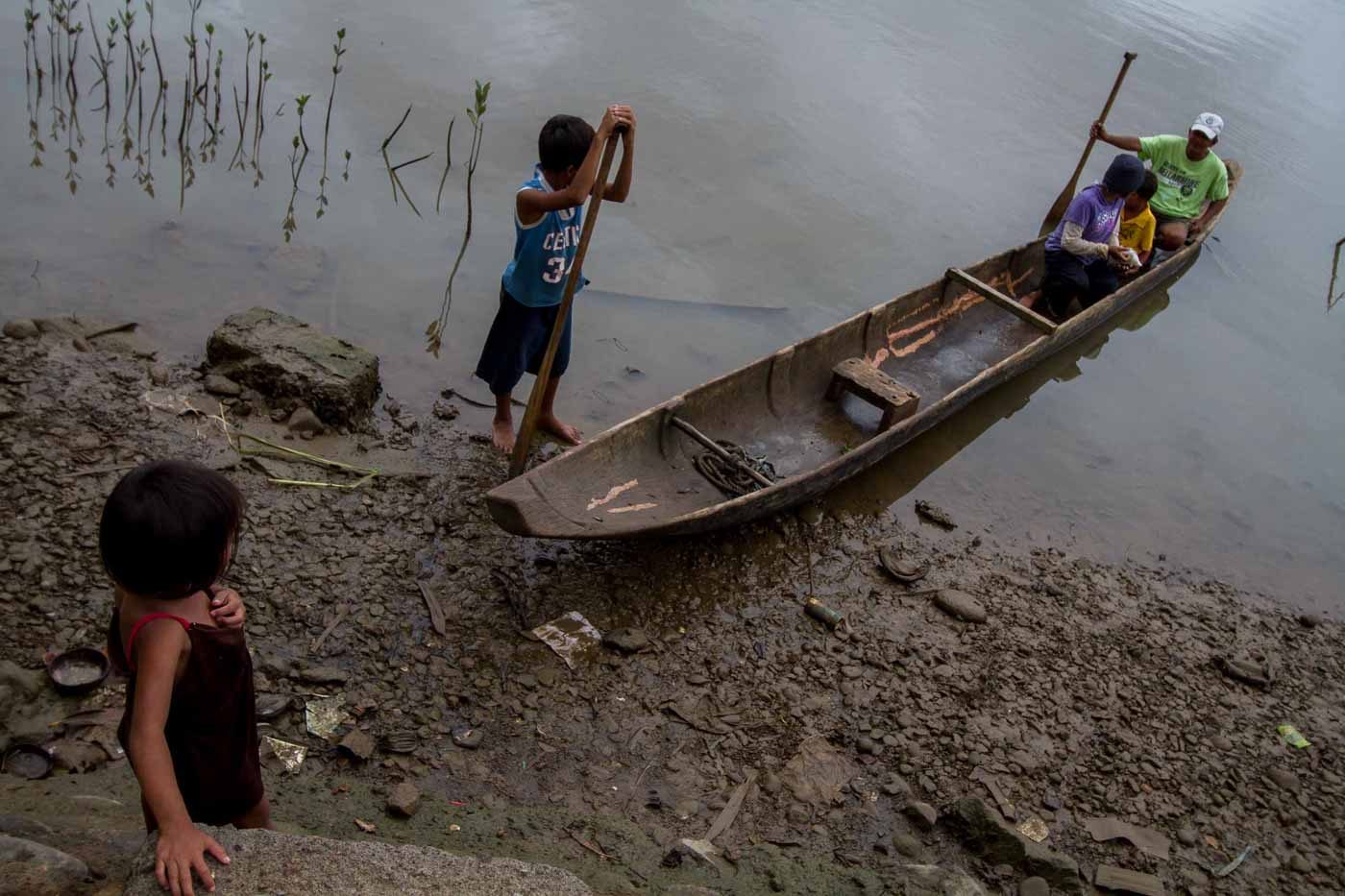
Twenty meters from Alex’s house is an old shanty of another child worker. Kai (whose name was changed for her protection) is a 15-year-old first year high school student who lives with her parents and 4 siblings.
During weekdays, Kai attends school despite her family’s financial limitations. She dreams that someday she and her siblings won’t have to work in the mines on weekends to make money that sends her to school.
“Tuwing Sabado at Linggo lang ako nandito. Mahirap kapag hindi ako pumasok sa eskwelahan; hindi ako makakahanap ng maayos na trabaho. Pero kapag nandito ako, ginagawa ko lahat para may maiuwi kami ng mga kapatid ko,” said Kai.
(I’m working during Saturdays and Sundays. It will be hard if I will not finish my studies; I will not able to find a decent job. But whenever I am here, my siblings and I do everything just to take something home.)
No choice
Both Alex and Kai know the risks of working in an underwater mining site. Aside from the fact that they are in the middle of a river and exposed to the elements, they could not determine old abandoned open mines laying in the river bed. These abandoned underwater pits could collapse anytime.
“Wala naman po kaming ibang mapagkukunan, ito lang. Kaya kahit delikado, nasanay na kami,” Kaye said while holding a wooden pan with a third of her body soaking wet.
(We have no other options but this. That’s why even if it is dangerous, we got used to it.)
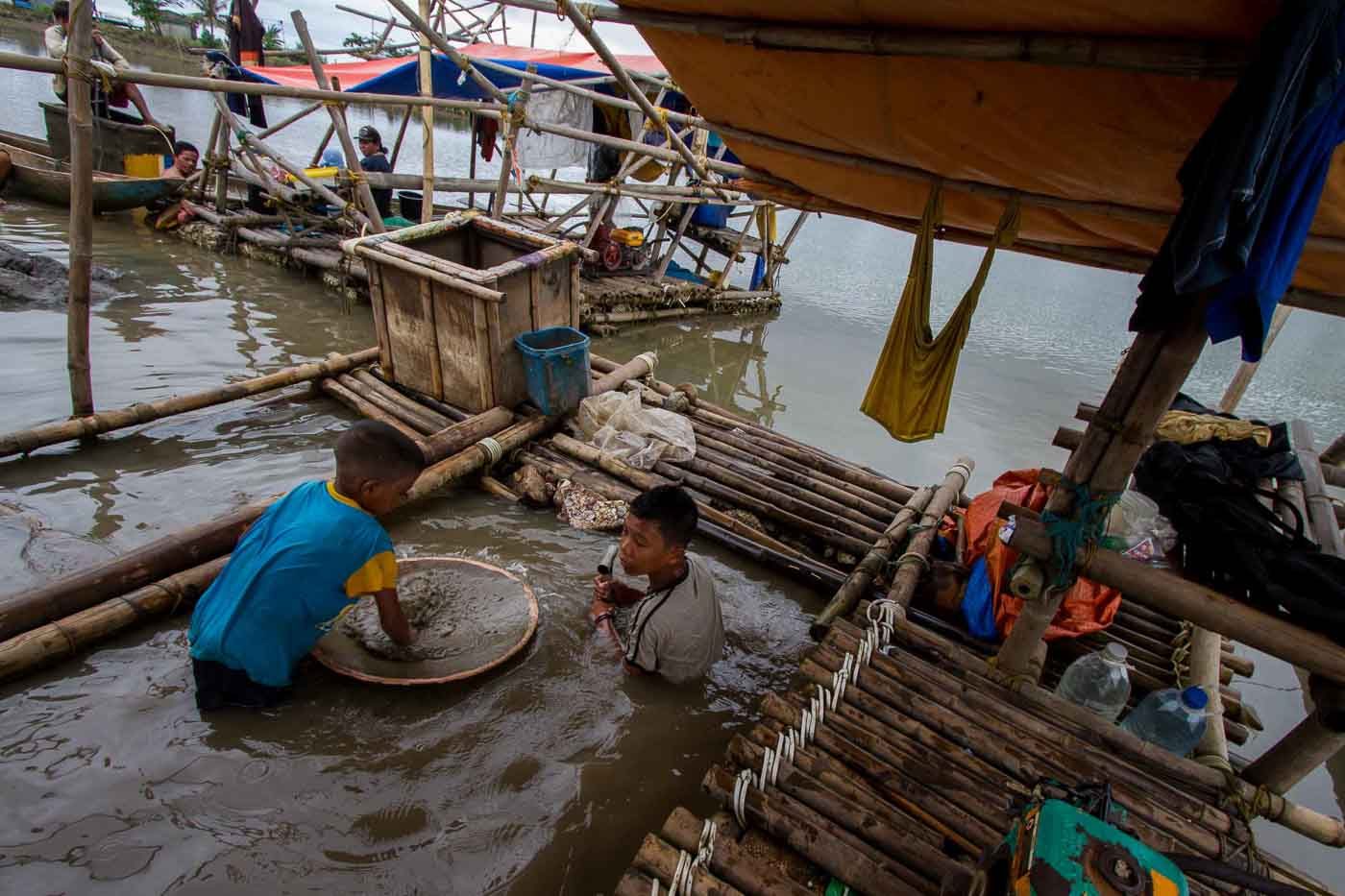
Hopeful
In her young age, Kai is well aware of what is happening in the political arena. She recognizes that it is already election season, when politicians in both local and national government are more visible.
While mixing the mercury with the mud on her wooden pan to extract the gold from all the impurities, Kai shares her experience with politicians. “Noong isang linggo may nagpunta po diyan sa basketbolan, namigay po ng libreng gamot. Tapos may mga pa-contest pa po sila. Noong nagsalita po para bagang nangangampanya na. May mga picture pa po ng mga opisyal sa Maynila,” she said.
(Last week someone came to the basketball court, they gave away free medicine and some parlor games. But when they talked it seemed they were already campaigning. They even have pictures of government officials from Metro Manila.)
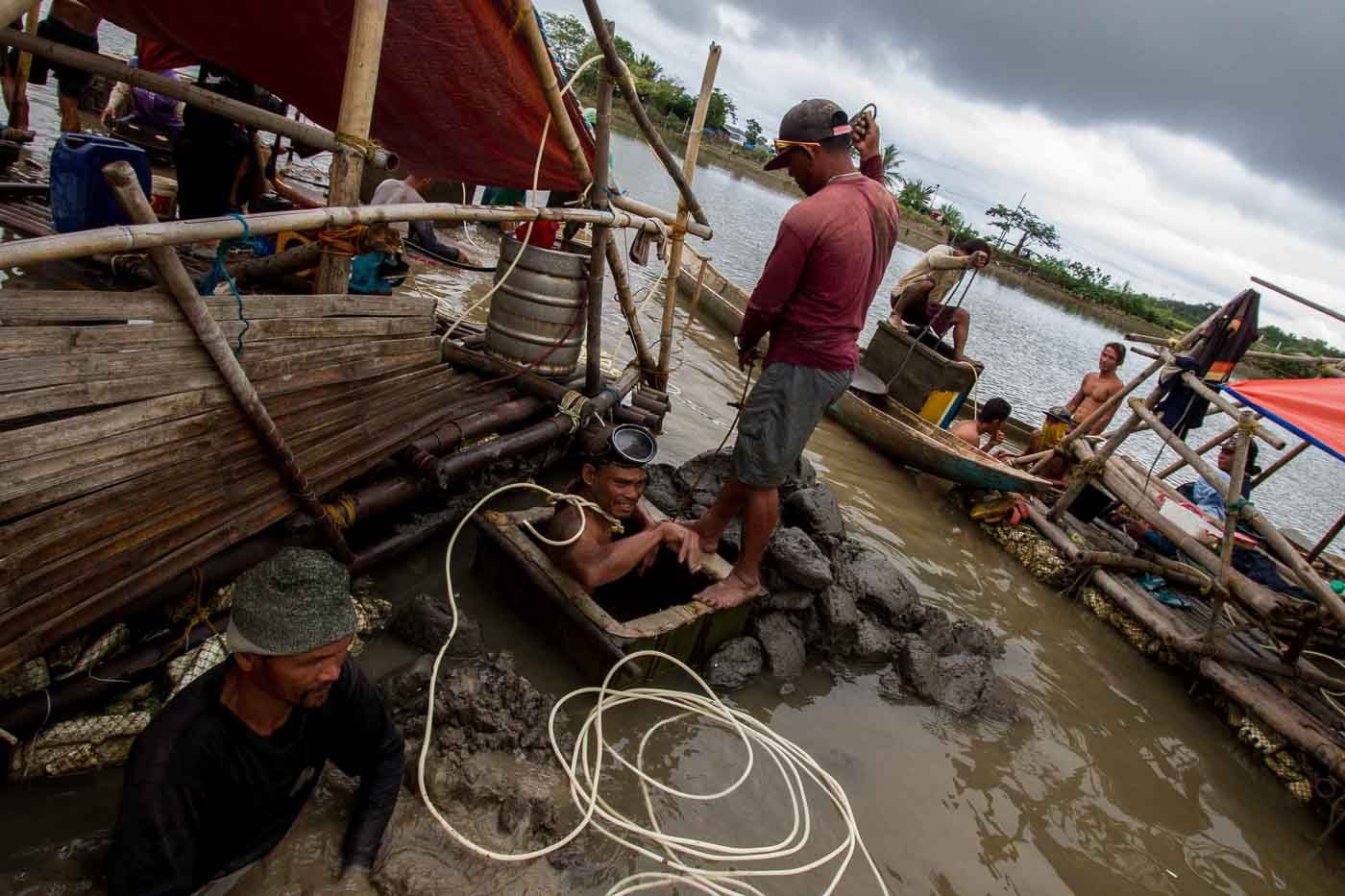
She finally got the amalgam on her left hand while holding her younger sister. They went to the trader’s place just along the road near the edge of the river to heat the mixture of gold and mercury. Finally, she and her sister can call it a day.
“Sana maalala nila kami. Sana iniisip nila kami lalo na kapag manalo sila sa eleksyon,” Kai said.
(I hope they will remember us. I hope they are thinking of us especially if they will win the elections.)
Action needed
Frank Jimenez, an environmental activist and an anti-mining advocate in Bicol, said the government must take cases of child labor seriously.
“There are laws that prohibit children to work hard labor, but in a poor community like Barangay Sta Milagrosa, we cannot blame parents if they send their kids to the mines. We should look at the root cause of poverty. We should act and give these families opportunities rather than just promises during elections,” Jimenez said in Filipino.
“The next president should come up with plans to address these problems. An 11-year-old boy has to work hard just to earn a hundred pesos while the rest of our congressmen are wasting money on substandard infrastructure projects,” Jimenez added.
According to Ricarte Padilla, mayor of Jose Panganiban town, the local government unit (LGU) is deliberating on how to work on a more systematic process for small scale mining in their town. The LGU wants to prioritize residents as primary beneficiaries, ban operations of large companies, and create an ID system for all mining site workers.
Padilla, however, denied that they allow children to work in mining areas.
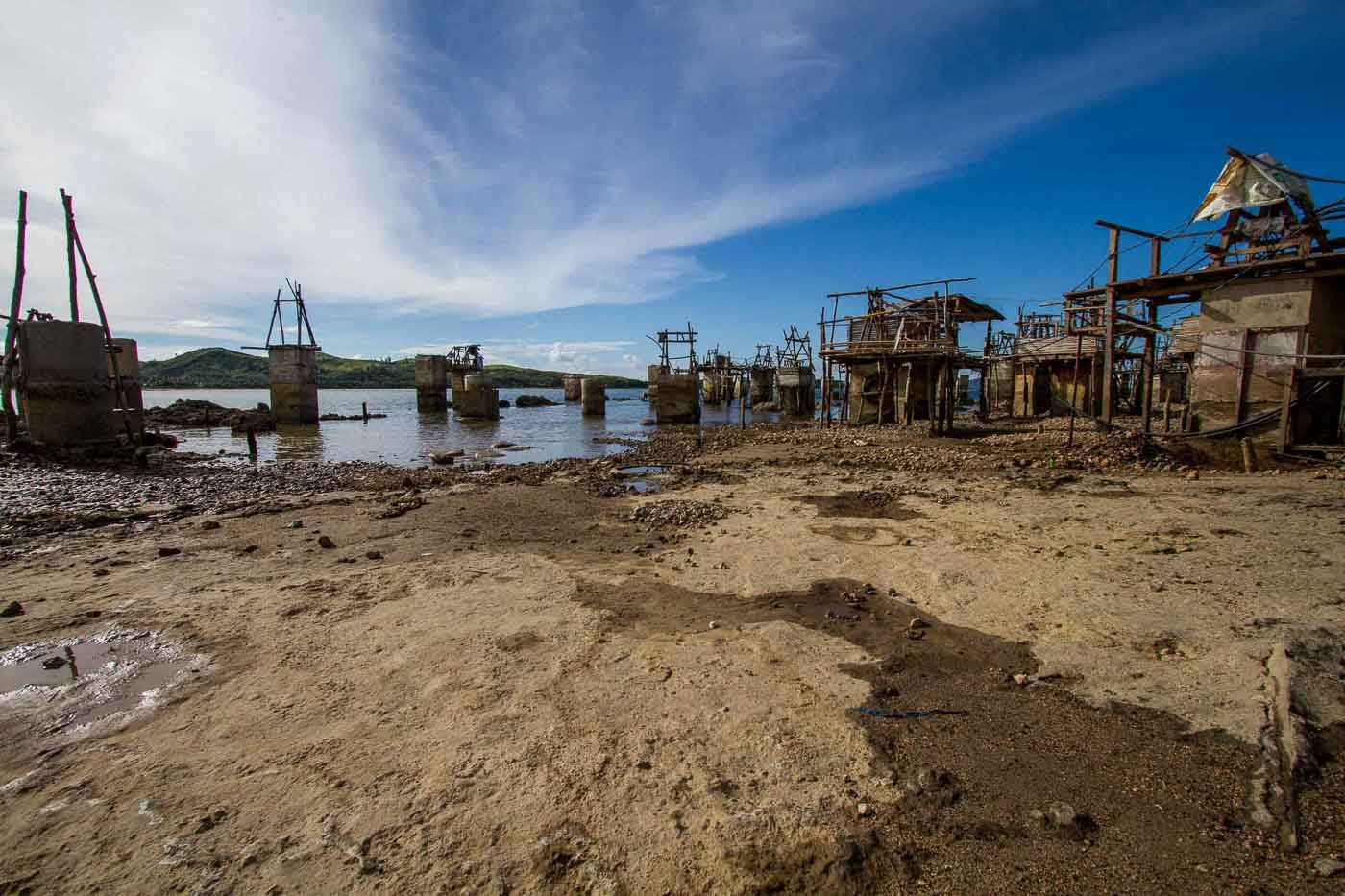
Kids should play, not work
Ecumenical Institution for Labor Education and Research (EILER) Executive Director Anna Leah Escresa Colina said that the condition of child laborers in the country has worsened. Most of them have to work more than 8 hours a day, 6 days a week to earn enough money. They are exposed to all hazards.
“Sila ay nalalantad sa mga panganib ng kemikal, tindi ng init ng araw, bigat ng gawain, pagkaguho ng mga tunnel, at mga panganib pansosyal katulad ng paggamit ng ilegal na droga sa lugar-paggawa,” she said.
(They are exposed to the dangers of chemicals, intense heat of the sun, hard labor, a collapsing tunnel, and other social threats like the use of illegal drugs.)
“Ang suliranin ng batang manggagawa ay suliraning panlipunan…Upang matugunan ang suliranin ng child labor, kinakailangang matugunan ang mga ugat na suliranin, disenteng trabaho na may seguridad, nakabubuhay na sahod para sa mga magulang, libre at accessible na pampublikong edukasyon sa mamamayan, at tunay na repormang agraryo ang nararapat na maging ilan sa mga mahahalagang plataporma ng susunod na administrasyon,” Colina added.
(The crisis of child labor is a social crisis…In order to address that, there is a need to address the root cause of the crisis, decent and secure jobs, reasonable compensation for the parents, free and accessible public education, and agrarian reform. These are the few important things that should be part of the next administration’s platform of government.)
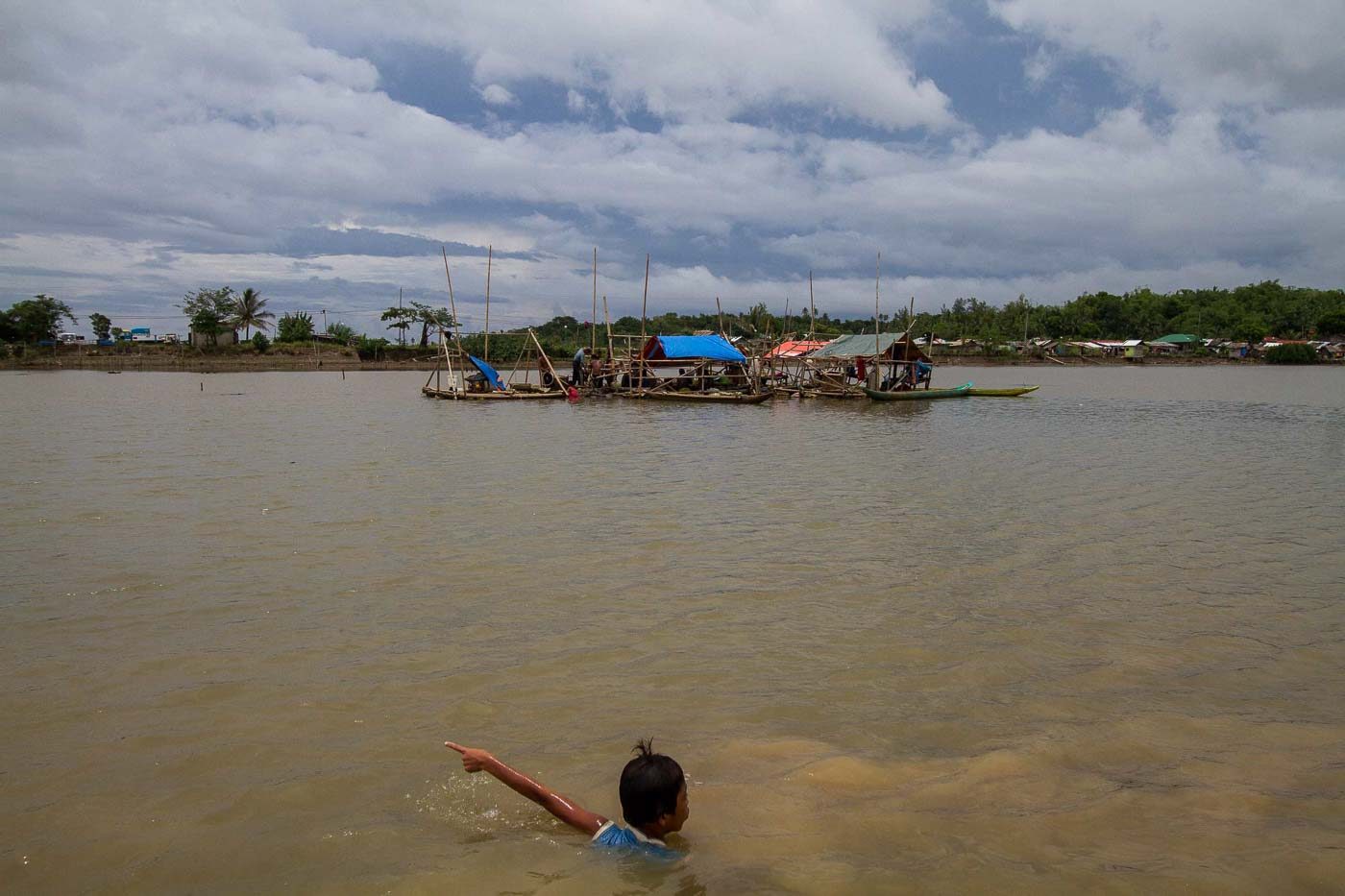
If ever she will be given a chance to talk to the government, Kai says she will raise issues of employment for her parents. She said she will urge the government to take a closer look at their situation, and provide a more organized system for small-scale mining.
“Kung mapapansin po kami, sana bisitahin nila kung saan kami nakatira. Sana maintindihan nila na mahirap talaga po ‘yung mga tao dito. Kaya kahit po nu’ng una ay ayaw po nila tatay at nanay na pumupunta kami dito. Wala po silang magawa dahil kung hindi po kami tutulong ay hindi po ako makakapasok sa high school,” Kai said.
(If ever they will listen to us, I hope they give us a visit. I hope they understand that people here are poor. Before, my father and mother didn’t want us to be here. But they can’t do anything because if we will not help them, I could not go to high school.)
That day, Kai took home P170 (US$3.64), while Alex was empty handed. Both kids returned to their respective homes to rest, hoping that the earth will be more generous to them the next day. – Rappler.com
Add a comment
How does this make you feel?
There are no comments yet. Add your comment to start the conversation.